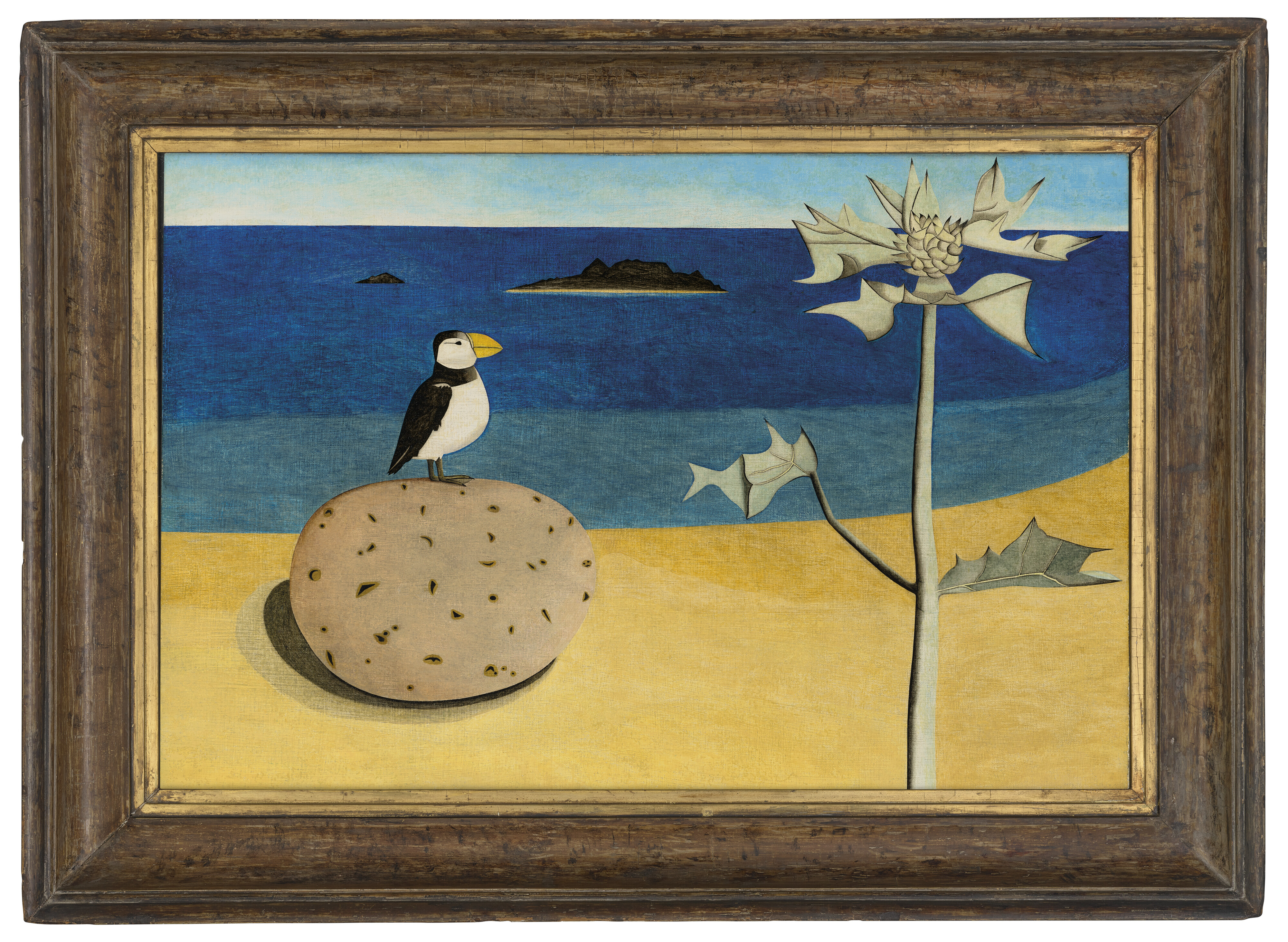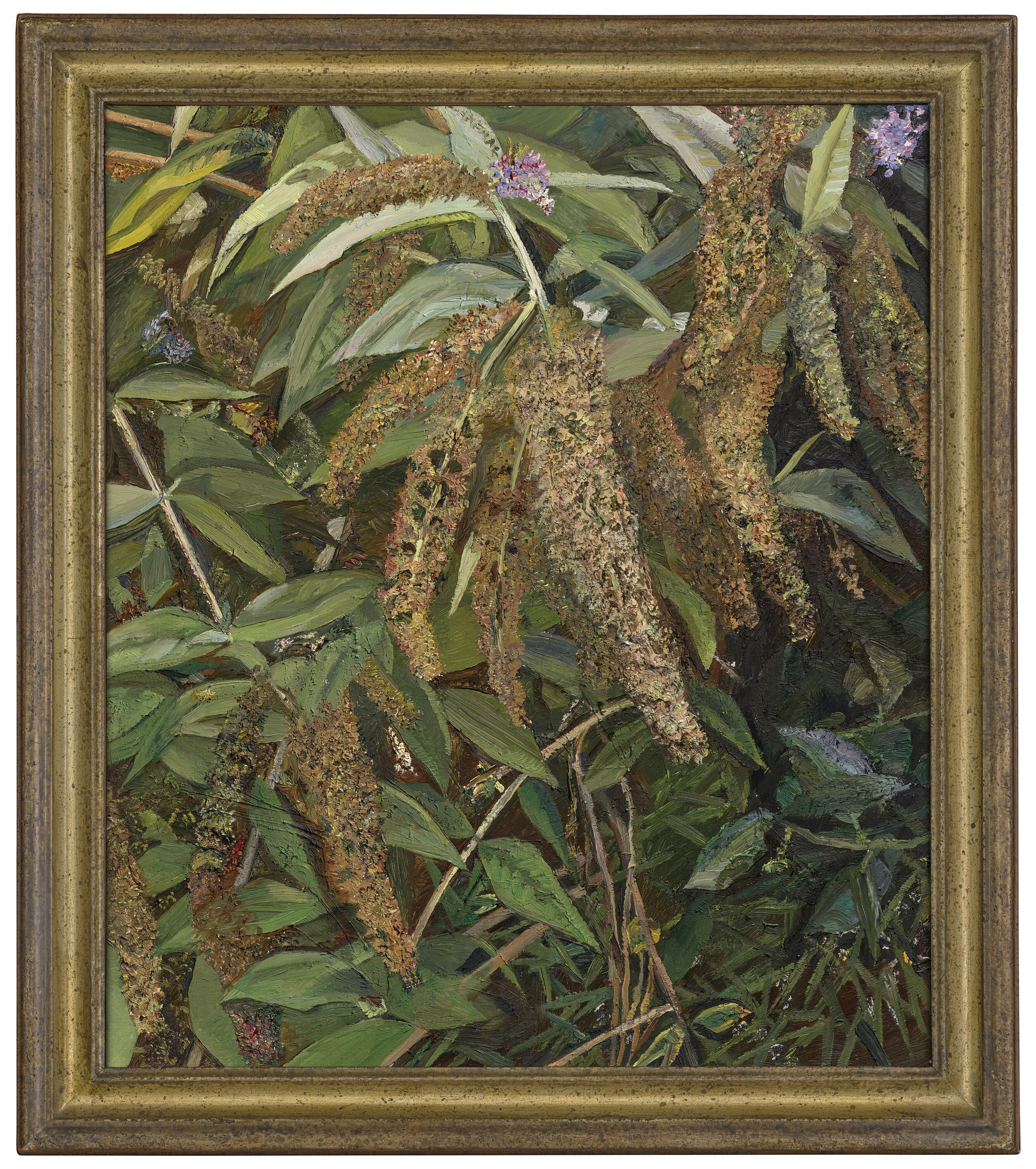Two rare and exquisite Lucian Freud paintings that trace the artist’s enduring fascination with the natural world throughout his distinguished career will highlight Christie’s 20th / 21st Century: London Evening Sale on 28 February 2023. Unseen in public since 1974, Scillonian Beachscape (1945-46, estimate: £3,500,000-5,500,000), is an early painting by the artist, and one of a handful of works inspired by a formative visit to the Isles of Scilly, accompanied by his close friend, the artist John Craxton. During the trip, Freud created a number of drawings and completed this canvas when he returned to London. Unusually for the artist, the composition of Scillonian Beachscape is directly based on one of his location drawings, Untitled (which was sold by Christie’s in October 2022). Scillonian Beachscape is presented alongside Garden from the Window (2002, estimate: £2,500,000-3,500,000), which comes to auction for the first time. Both paintings are offered from the same private collection, and were formerly in the renowned collection of Simon Sainsbury.
Tessa Lord, Acting Head of Department, Post-War and Contemporary Art, Christie’s London: “Lucian Freud, revered as one of the greatest painters of the 20th century, continually returned to the natural world as a source of rich inspiration throughout his career. This lifelong fascination is perfectly encapsulated in these two exquisite paintings which offer viewers insight into both his early and late life. The significance of the natural world to Freud is currently being explored in an exhibition at London’s Garden Museum. Each previously in the prestigious collection of the British philanthropist and businessman Simon Sainsbury, these two remarkable works will highlight our upcoming 20th / 21st Century: London Evening Sale. We expect them to resonate with our international collector base, particularly in light of London’s National Gallery’s recent centenary retrospective “Lucian Freud: New Perspectives” which will open at Thyssen-Bornemisza Museo Nacional, Madrid in February.”
Scillonian Beachscape presents a dreamlike coastal scene in lush, sun-drenched colour. Captured in the crisp detail that defines Freud’s work of this period, a tall sea-holly dominates the foreground, unfurling sharp, scalloped leaves. To the left, a puffin perches on a round, perfectly pitted pebble. With their precisely modelled shadows, the objects contrast with the backdrop’s stylised, near-abstract fields of colour: they stand on a golden beach, which gives way to bands of blue and turquoise sea, and a distant strip of cyan sky. Two dark islets slice through the water like fins. Freud’s early practice was defined by plant and animal subjects before he shifted his focus to portraiture. Scillonian Beachscape is also distinguished by its remarkable scale. At half a metre in height and three-quarters of a metre across, it stands alongside major early works including Boy with a Feather (1943), The Painter’s Room (1945) and Dead Heron (1945), as one of the very largest paintings Freud had made by this date.
An exquisite portrait of nature painted at the height of Freud’s powers, Garden from the Window offers a rare glimpse of life beyond the artist’s studio walls. With exceptional detail, the artist captures the dappled play of light across the buddleia at the centre of his garden. Cropped to near-abstraction, leaves and petals are rendered with the same exacting textures that Freud applied to human flesh, their forms entangled like limbs. Painted in 2002, and unveiled at Tate Britain, London two years later, the canvas belongs to a series of works depicting the artist’s garden at 138 Kensington Church Street. The wild, overgrown plot became a great source of inspiration to him during the last two decades of his life. More keenly aware than ever before of time’s inevitable passage, Freud set about capturing the miraculous flux of light and life outside his window.

